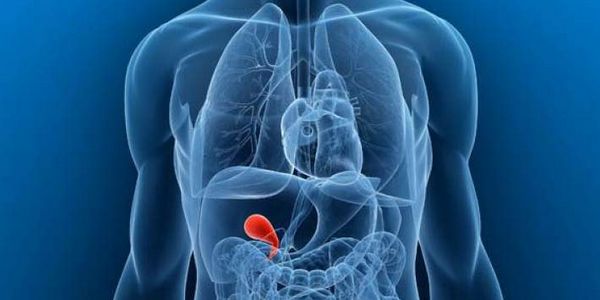Cholelithiasis – treatment of disease. Symptoms and prevention of diseases of cholelithiasis

Cholelithiasis – What is this disease? Jelchnokamennaya disease-disease, associated with metabolic disorders in the body and occurs holecistolitiazom (the emergence of gallstones) and/or holedoholitiazom. When this disease possible hepatic colic, manifesting acute shvatkoobraznymi abdominal pain.
Jelchnokamennaya disease is more common in women. Obesity and older age are negative factors, contributing to the development of the disease.
Cholelithiasis – The cause of the
Development of gallstone disease contribute to the following factors:
- advanced age;
- genetic predisposition;
- irrational and unbalanced diet;
- metabolism of fat in the body;
- starvation;
- excessive consumption of alcoholic beverages;
- gipodinamiя;
- diseases of the gastrointestinal tract;
- metabolic diseases (eg, diabetes);
- taking certain medications;
- infection of the biliary tract and intestine dvenadcatiperstno;
- cirrhosis of the liver;
- cholecystitis;
- other factors.
Cholelithiasis – Symptoms
For a long time, jelchnokamennaya disease washes held asymptomatic. Often the only symptom of the disease is yellowing of the scleras and/or jaundice.
Bouts of hepatic colic for cholelithiasis are typical. The main symptoms of colic are intense sudden pain in the right hypochondrium, tension and soreness stomach, abdominal distention, belching, vomiting, weakness, malaise, irritability, disorder of the Chair. May increase body temperature up to 38 degrees, the appearance of jaundice and skin itching.
If jelchnokamenna disease also occur and nonspecific symptoms. This could include:
- Neurasthenic syndrome, characterized by fatigue, generalized weakness, disorder of sleep and appetite, general weakness and other symptoms.
- Allergic reactions to foods mainly (dairy, fruit, vegetables).
Cholelithiasis – Diagnostics
Diagnosis of cholelithiasis is history, examination of the patient and laboratory and instrumental examination methods.
Laboratory diagnostic methods:
- general blood analysis;
- biochemical blood analysis;
- tests for the presence of hepatitis a virus, IN, FROM, D, IS;
- measurement of lipid metabolism;
- analysis of urine for the presence of bilirubin;
- coprogram.
Instrumental Diagnostics methods:
- ultrasound examination;
- esophagogastroduodenoscopy;
- radiography of abdominal cavity organs;
- retrograde cholangiopancreatography;
- computed tomography of the abdomen;
- magnetic resonance imaging of abdominal organs;
- Hepatobiliary scintigraphy;
- other research methods.
Cholelithiasis – Types of disease
Distinguish latent, chronic pain and chronic relapsing forms of cholelithiasis. On the severity of the pathological process jelchnokamennaya disease can be easy, moderate and severe.
Cholelithiasis – Actions of the patient
If you have suspicious symptoms should see a doctor.
Cholelithiasis – Treatment
Treatment of gallstone disease is confined to the following activities:
- Diet-table no. 5. Waiver of fried food, smoked, canned food, as well as too hot or cold foods.
- Supplementation, contributing to the excretion of gall stones (urolesan etc). Appropriate in the early stages of the disease, When the stones have not yet reached large sizes.
- Welcome to protect power and hepatoprotectors liver tissues.
- Antibacterial therapy is needed with cholecystitis and inflammatory.
Self-service use any painkillers or spazmoliticakih funds when an hepatic colic is not recommended, because it can mask the clinical picture of the disease.
In some cases with cholelithiasis resected, that is to remove the gall bladder. Currently, gall bladder removed classic (laparotomy) means and methods of laparoscopy-mini-invasive surgery.
Cholelithiasis – Complications
Jelchnokamennaya disease can lead to acute or chronic cholecystitis. It is also possible the development of obstructive jaundice, acute cholangitis, hydrops of the gallbladder, bowel obstruction, recurrence of lithogenesis in the gall bladder and postcholecystectomical syndrome. The most dangerous complications, which can be caused by cholelithiasis, are the perf (gap) gall bladder and the development of acute peritonitis.
Cholelithiasis – Prevention
Prevention of gallstone disease is reduced to maintain optimal body weight and level of physical activity. Overweight and physical inactivity are powerful negative factors, contributing to the development of the disease.
If there is susceptibility to the disease are recommended diet (Table No. 5) and preparations bile acids.
